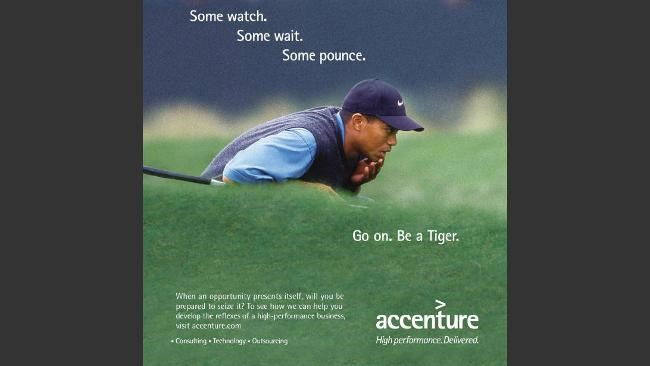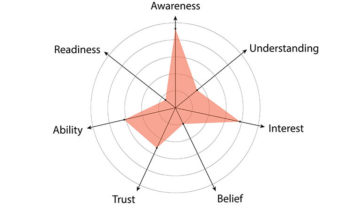Can a Billboard Improve Your Sales?
We spend money on advertising because we know that before clients can engage with us, they have to know who we are, what Doug Fletcher and I call Awareness in our new book, How Clients Buy. Does that mean that advertising is a pre-requisite to consulting and professional services success? The answer is, “No.” Walt Shill, Global Managing Partner for Client Services for ERM, helps us understand why.
Walt has seen it all. He’s been a partner at McKinsey, run the management consulting business in North America for Accenture, built a successful start-up, founded an investment firm, and run a multi-billion environmental risk management practice. More importantly, though, he has been on both sides of the business development equation. He has sold consulting services to large firms and, as an operator, he has bought those services as well.
When we sat down with Walt, he spoke about advertising. He remembers being surprised by how effective the Tiger Woods campaign was at building awareness for Accenture, especially in the early days. That said, he still believes that consulting and professional services are bought more than they are sold, and that trust and relationships drive that engagement. His view is that one-to-one marketing is both necessary and sufficient for building a consulting business. Advertising, on the other hand, is just the cherry on the cake – nice to have but not necessary.
Walt reports that at McKinsey, the most important measure of engagement with a client was how they were affecting the client’s performance. The highest virtue was to have “impact” – impact on companies, impact on industries, and impact on the world. If a McKinsey team works with a chemical company on a more efficient pricing model, its goal should never be anything other than to create exponential increases in growth and shareholder value.
Think of what Walt is saying in terms of quadrants where one axis is the mix between one-to-one marketing and mass marketing and the second axis is the object of that marketing – are you trying to build a brand or share stories of impact?

In professional services, quadrant IV is where you want to be.
Quadrant IV is best. We should always prefer to talk with clients about their problems and how we can (really) help. That said, mass marketing your brand is not all bad. It is just that mass marketing where the focus is on impact is better, and 1:1 marketing with a focus on impact is best.
Accenture’s example is helpful. At first, they advertised using Tiger Woods to equate Accenture with performance in the clients’ mind, a brand message:

In order to build awareness and an association with performance, Accenture ran advertisements featuring Tiger Woods.
Over time, though, they moved away from Tiger, to a more (effective) use of mass marketing to drive home an impact message – telling stories about how they helped companies:

Eventually, Accenture shifted the orientation of its advertising to emphasize results.
Walt reminds us that we shouldn’t forget where the real action lies. Consulting and professional services are bought by real people who get to know and trust you, one relationship at a time. When relationships like these are married to a point of view about how you can meaningfully impact a business, the result is new business.
What really strikes me about Walt’s perspective is the emphasis on substance. The goal is not to create “thought leadership” – content for content’s sake that can be pushed out to the world through social media or spam. The goal is to have an experience-informed perspective on a company’s challenges that is able to drive big, positive change for a client.
And so, the answer to my Detroit airport question is that advertising can help consulting and professional services firms, but it is, on the whole, a poor investment. Much better is to spend time developing strategies and processes that can meaningfully move the needle for your clients. That’s what drives referral and grows your reputation.




